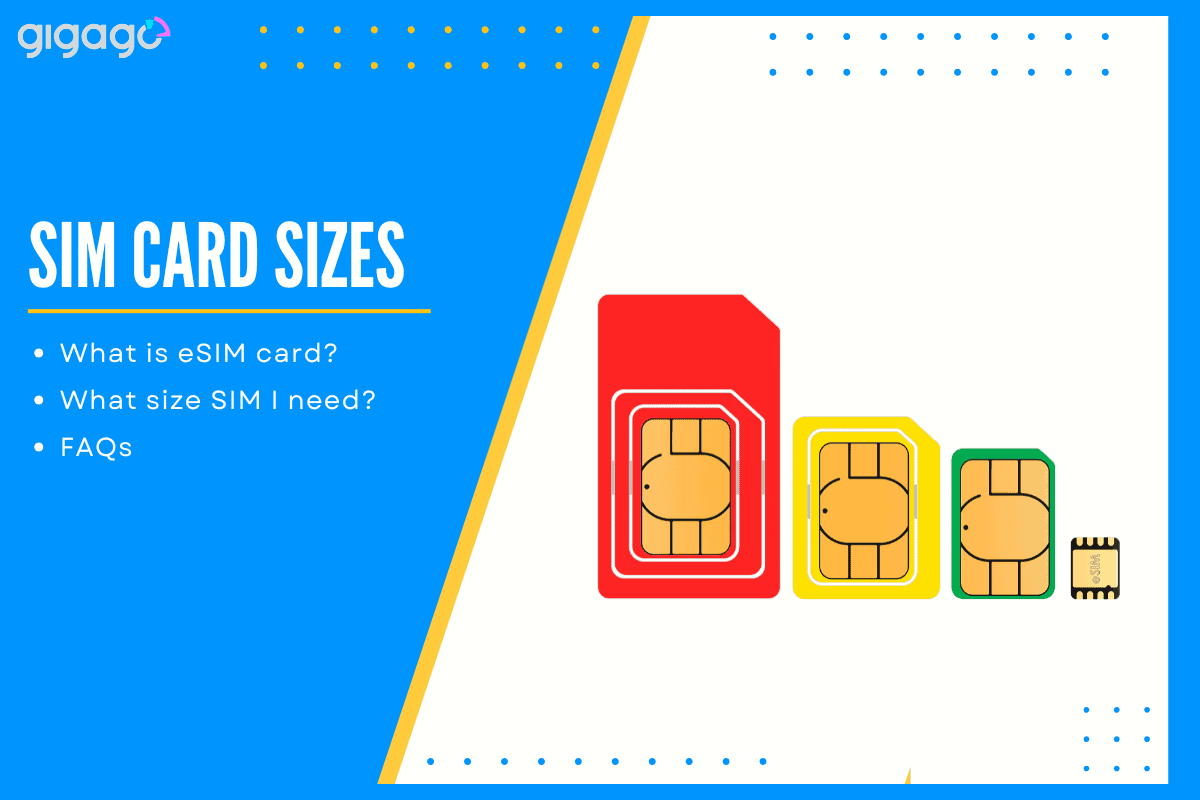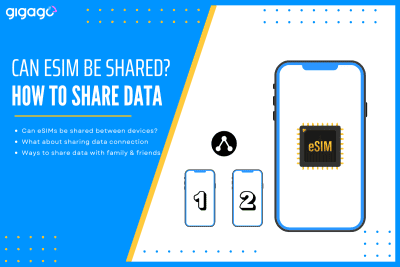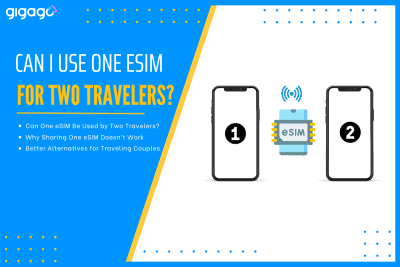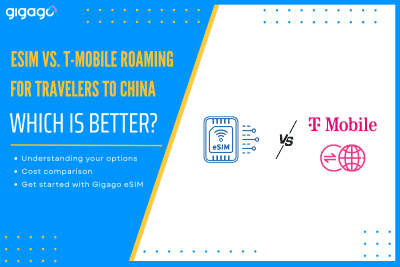Traveling for a short trip, typically for 3- to 7-days, drastically changes the rules of connectivity. The traditional solutions like expensive carrier roaming or time-consuming local SIM buying are simply impractical when time time is precious. This is where eSIMs take the picture. The eSIM (embedded because it is a digital solution that solves the […]
SIM card sizes
SIM card sizes have evolved significantly over the years, from the original standard SIM to today’s digital eSIM technology. Each size – standard, micro, and nano – serves different devices and generations of phones. Understanding these differences helps ensure you choose the right SIM card for your specific device needs.

In this article
I. SIM card size chart
SIM cards have evolved significantly since their introduction. Starting from credit card size, they have become smaller to match the trend of slimmer phones.
Three common SIM types today:
- Nano SIM (4FF): Smallest size, about a fingernail
- Micro SIM (3FF): Medium size
- Mini SIM (2FF): Largest of the three common types
Modern technology also introduced eSIM – a digital version without physical cards. Despite size differences, all SIM types serve the same basic purpose: connecting phones to mobile networks and storing subscriber information.
| SIM Type | Name Code | Length (mm) | Width (mm) |
| Standard (Mini) SIM | 2FF | 25 | 15 |
| Micro SIM | 3FF | 15 | 12 |
| Nano SIM | 4FF | 12.3 | 8.8 |
Note: FF stands for Form Factor, and measurements are in millimeters (mm).
1. What is a standard SIM card?
The Standard SIM (2FF) emerged as the first compact SIM format, replacing the original credit card-sized SIM (1FF). Originally named “Mini SIM”, it measures 25mm x 15mm and was widely used in early mobile phones with physical keypads.
| SIM Type | Size | Era |
| 1FF (Full-size) | Credit card size | First mobile phones |
| 2FF (Standard) | 25mm x 15mm | Early keypad phones |
This format was the first step toward modern compact SIM cards, though it’s now largely replaced by smaller Micro and Nano formats in current devices.
2. What is a micro SIM card?
The Micro SIM (3FF) is a compact version of the Standard SIM, featuring an identical chip in a 15mm x 12mm frame. Introduced in 2003, it helped create more space inside phones for larger batteries and better processors.
While maintaining full functionality of the original SIM, this smaller format marked an important step in mobile phone evolution before being succeeded by the Nano SIM.
3. What is a nano SIM card?
The Nano SIM (4FF), introduced in 2012, represents the smallest physical SIM card at 12.3mm x 8.8mm. This format reduces the plastic frame to minimal size, focusing on the essential chip area.
Unlike the gradual adoption of Micro SIM, the Nano SIM quickly became standard in most smartphones. It remains the primary physical SIM format in modern devices, optimizing internal space while maintaining full functionality.
II. What is an eSIM card?
The eSIM (embedded SIM) represents modern SIM technology without physical cards. Built into devices as a tiny 5mm x 6mm chip, it’s nearly half the size of a Nano SIM.
Modern Implementation:
- Built into the latest iPhones and premium smartphones
- Allows multiple carrier profiles
- Quick network switching without physical card swaps
eSIM technology saves internal phone space and offers easier carrier management, marking the next step in mobile connectivity evolution.
III. What size SIM do I need?
Modern phones typically use the Nano SIM format, which has been standard since 2014. US models of iPhone 14 and newer versions have moved exclusively to eSIM technology, removing physical SIM slots entirely. Only a small number of basic phones or older models still use Micro or Standard SIM formats.
Most mobile carriers solve size compatibility issues by providing combo SIM cardsa single card with pre-cut sections that can be adjusted to fit any common SIM format. When getting a new SIM, simply tell your carrier your phone model to ensure compatibility. This universal approach makes SIM card selection straightforward for all users, regardless of their device type.
IV. What if I get the wrong size SIM card for my phone?
When your SIM card doesn’t fit your phone, you have three solutions:
- Safest Option: Contact your mobile carrier to get a free replacement SIM in the correct size. This method is risk-free and usually takes just one visit to the carrier store.
- Temporary Solution: Use a SIM adapter when your SIM is too small. For example, converting a Nano SIM to fit a Micro SIM slot.
- Last Resort: Cut a larger SIM into a smaller size using a SIM cutting tool. However, this method risks damaging the chip and should only be used when other options aren’t available.
► Recommendation: Choose the first option to avoid any risk of damaging your SIM card and losing connectivity.
V. Are SIM card data amounts related to SIM card size?
No. All SIM cards use the same chip with equal storage (250 contacts, messages, network data). Only the outer plastic frame size differs between Standard, Micro, and Nano SIMs to fit different phones.
VI. FAQs
Why are SIM cards getting smaller?
SIM cards continue to shrink to save valuable space inside phones. This allows manufacturers to include larger batteries, better processors, and more features while keeping devices slim and compact.
Do all SIM cards fit all phones?
No. Different phones require different SIM sizes – standard, micro, or nano. Some newer phones have switched entirely to eSIM technology and don’t accept physical SIM cards at all.
What can I do if I have the wrong size SIM card?
You have several options:
Contact your carrier for a replacement SIM in the correct size
Visit a carrier store for an immediate replacement
Use a SIM adapter if your card is too small
As a last resort, carefully cut a larger SIM to fit (though this risks damaging the card)



